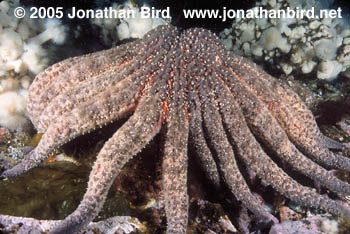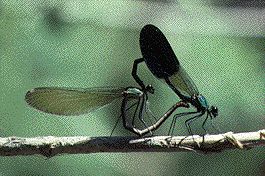
"The magic of the microscope is not that it makes little creatures larger, but that it makes a large one smaller. We are too big for our world. The microscope takes us down from our proud and lonely immensity and makes us, for a time, fellow citizens with the great majority of living things. It lets us share with them the strange and beautiful world where a meter amounts to a mile and yesterday was years ago."
-From the book “Mites of Moths and Butterflies”
This is an animal I wouldn’t want to meet if I were tiny. Though they are small — a fully-grown adult has a shell just 2 centimeters (three quarters of an inch) across — they can see off a lizard that intrudes on their plant, and they can kill large centipedes, so they’d make mincemeat of little me.
All the same, I like them because they are unusual in two ways. First: their habitat. Most crabs live in the ocean or, if they’re really adventurous, in burrows they dig on a beach; a few live in (or near) streams and lakes. But M. depressus has evolved to exploit the bromeliad pools, and as far as anyone knows, they do so exclusively.
And here’s the other oddity: in this species, mothers look after their young.
Crabs aren’t famous for paying attention to their offspring. In most species, the female carries her eggs until they are ready to hatch, then releases the larvae into the ocean, where they fend for themselves. The numbers can be enormous — female blue crabs (Callinectes sapidus), for instance, can release two million larvae in one go. (After fertilizing all those eggs, the male needs 15 days to replenish his sperm supplies, poor fellow.)

M. depressus is different. The female lavishes attention on her young. She chooses her plant carefully — she prefers plants with larger volumes of water — and then prepares the pool that will be the nursery. She fishes out any dead leaves that may have fallen in, and drops them onto the ground. (If a sneaky experimenter puts leaves back in, she’ll remove them.) And she drops empty snail shells into the water, often after capturing and feasting on the owners.
These behaviors have two effects. Removing the leaves increases the amount of oxygen in the water; crab larvae need high levels of oxygen in order to breathe. The added snail shells increase the levels of calcium, a mineral without which baby crabs can’t make shells of their own. Unimproved pools can’t sustain baby crabs.
And the hard work doesn’t stop there. For several weeks, the mother feeds her young — perhaps as many as 90 of them (which sounds a lot — but is a lot less than two million) — on cockroaches and millipedes that she catches. And she protects them from being eaten by predators, especially hungry damselfly larvae.
Damselfly larvae generally live in streams, ponds, and lakes; but some have evolved to inhabit bromeliad pools. Among them: Diceratobasis macrogaster. Given a chance, one of these larvae will eat as many as five baby crabs a day. The mother crab does not give them that chance; but an orphaned brood will perish quickly.
Even more unusual, the young crabs don’t disperse immediately, but remain with mom; sometimes you’ll find a couple of generations living together. This is probably because small crabs are more vulnerable to attack as they search for plants of their own, and so it makes sense to grow up before leaving. But whatever the reason, living in family groups is the first evolutionary step towards complicated social arrangements, such as those common among termites and the ants, bees and wasps, but rare for other insects or crustaceans. Perhaps one day, if the evolutionary pressures are right, crabs might join the list of highly social creatures.
-Taken from Olivia Judson's Blog








